I’m often asked for easy ways people can help the local wildlife. Well, here’s one task that couldn’t be simpler. In fact, you don’t have to do anything at all, except wait.
If you live in the Northern Hemisphere and have a backyard, it’s approaching the time of year when you start noticing dead stalks, late-falling leaves and the remains of last year’s garden. Perhaps you have the itch to start cleaning, to tidy up the space a bit.
But here’s where you can help: Wait. Postpone your spring cleaning.
Those stalks and dead leaves may look untidy to your sensibilities, but they’re important habitat for pollinators and beneficial insects. Those insects in turn provide food for birds.
It’s time to shirk your lawn care responsibilities and be proud of it.
Insects in Winter
Most gardeners and conservationists know pollinating insects are important. And when it comes to creating pollinator habitat, most of us naturally think about flowers. But insects need healthy habitat year round.
Some insects migrate, but many will stay in the same area through the winter. That means if you plant wildflowers or other plants for beneficial insects, those insects don’t leave when the frost comes. They’re still in your yard. They may be out of sight, out of mind, but they still need a place to spend the winter.
And various dead vegetation often provides that overwintering habitat.
As Penn State Extension notes, many moths and butterflies spend the winter hidden in dead stalks in gardens. Native bees often live underground and rely on dead vegetation and leaves for insulation. Other pollinators spend the winter inside hollow dead stems. Even when bees and other insects start to emerge, they still need cover to keep warm on chilly nights.
If you clean up this vegetation now, you may be undoing the pollinator habitat you created in the summer.
The Xerces Society for Invertebrate Conservation has been leading outreach campaigns encouraging winter pollinator habitat, urging gardeners to “leave the leaves” and “don’t spring into spring cleaning.”
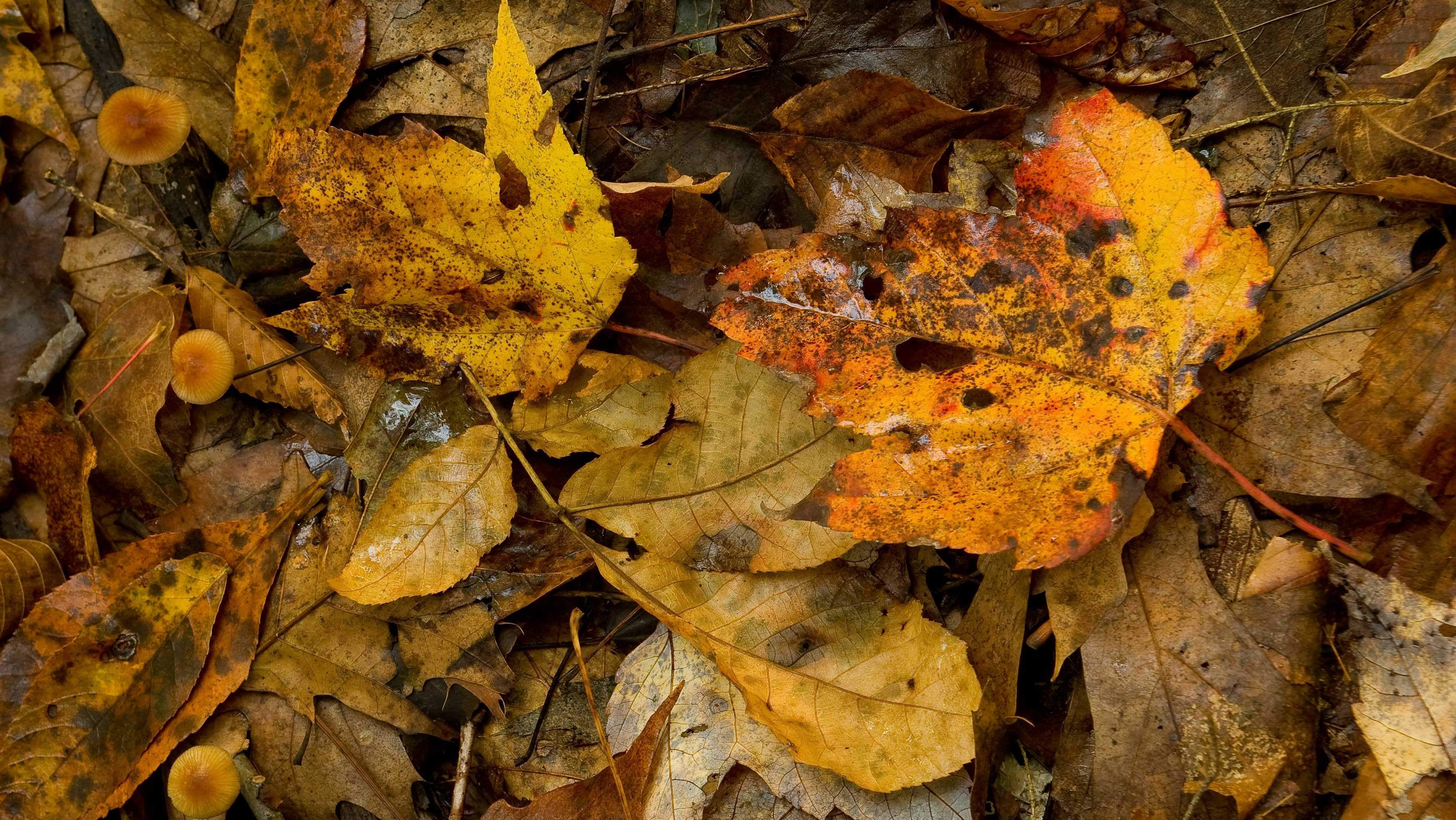
Basically, when you remove dead vegetation and leaves early, you are reducing your yard’s value for beneficial insects. Cut dead stalks and you may be killing butterflies. Remove leaf cover and native bees can freeze.
A lot of gardeners have embraced these campaigns, recognizing the benefit native bees and butterflies offer to the vegetables and flowers they grow. My wife, an avid gardener, follows a lot of gardening groups on social media and “put down those pruners!” memes are difficult to avoid at this time of year. Curiously, I don’t see similar campaigns among birders.
Many birders with backyards care deeply about providing food and shelter for our feathered friends. Come nesting season, many birds will eat a lot of insects. In fact, some researchers believe that bird declines are, at least in part, tied to insect declines.
When it comes to backyard wildlife habitat, what’s good for pollinators is good for birds. And having a biologically diverse yard is better for all wildlife. It’s time for birders to help get the word out about spring cleaning.
One part of that is to leave some dead vegetation and leaves around through the winter.
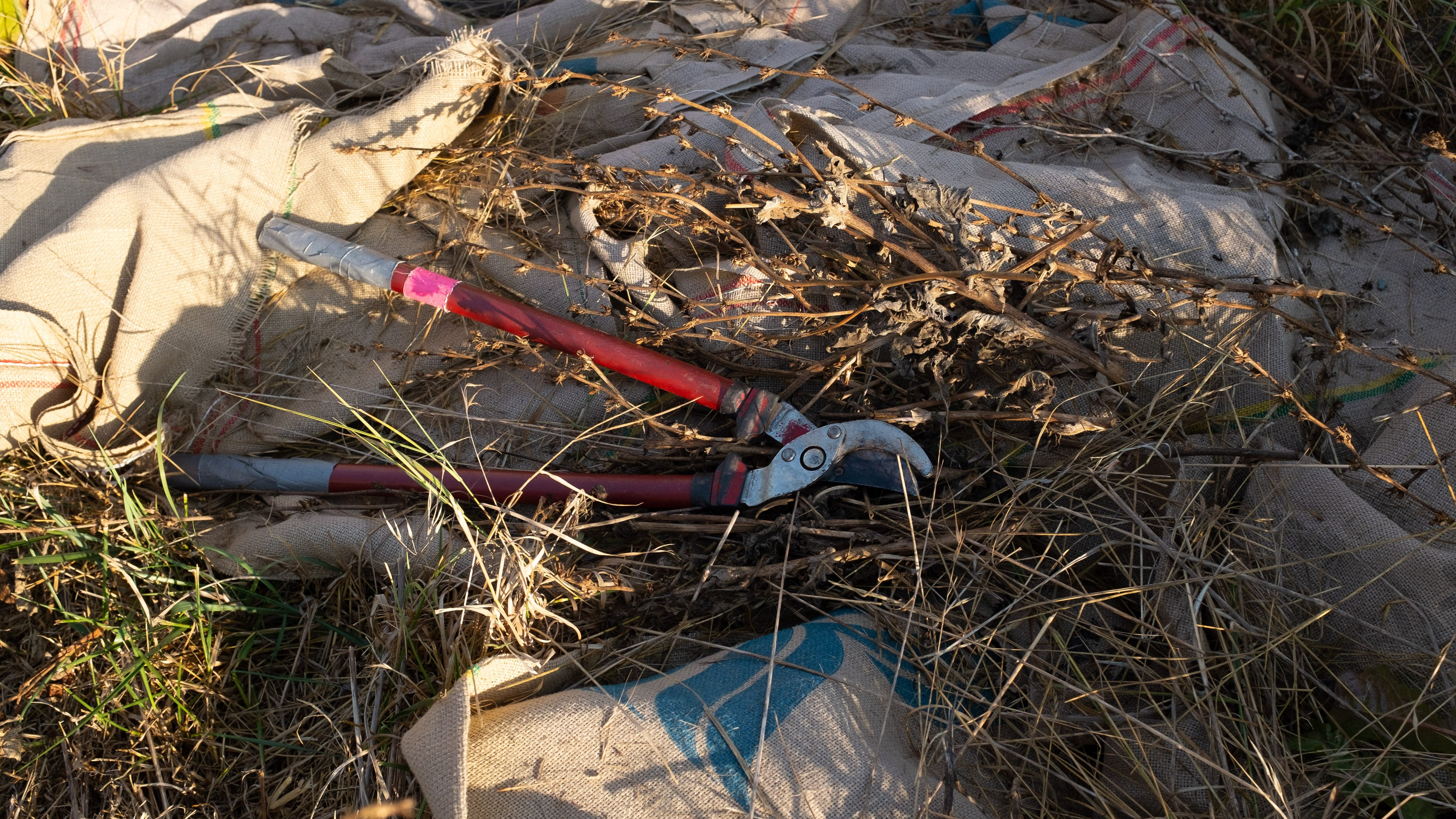
Spring Cleaning Guidelines
So: when is it ok to clean up dead stalks and leaves? A lot of gardening memes urge you to “wait until it is 50 degrees” to do spring cleaning. This is a handy and easy-to-remember rule.
But, as is usually the case with memes, there’s not much room for nuance. Does this mean when the temperature first reaches 50, or when it’s consistently 50? What about night-time temperatures? The Xerces Society states there are no hard rules here but offers some guidelines to help.
For instance, if it’s time to plant tomatoes, you are likely safe to clean up the garden. Similarly, if you’re mowing the lawn, it’s going to be warm enough for native bees to be active. In most parts of North America, right now (late February) is too early. The longer you can wait, the better it is for pollinators – and, yes, for birds.
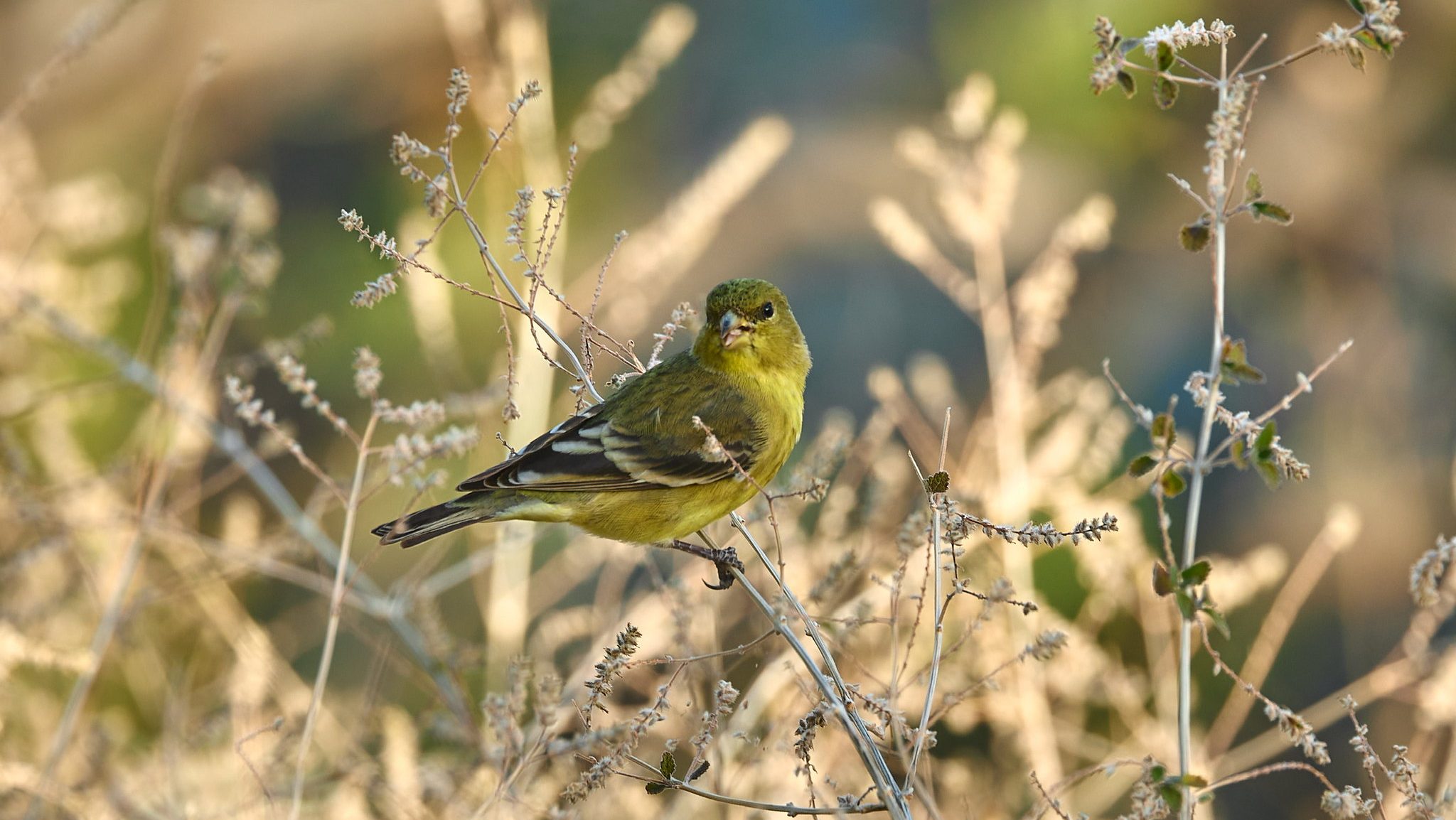
Peer Pressure
I acknowledge that there are going to be other factors at play in your spring clean-up. For many, the biggest issue is going to be neighborhood rules and ordinances. Many homeowner’s associations want neat and tidy lawns.
Unfortunately, many conservationists tend to take an “all or nothing” approach to personal actions. Never eat meat. Never buy plastic. Never clean up leaves. Often, this approach isn’t helpful and may turn people away from the cause. It also may just not be feasible.
When it comes to your lawn and garden, it does not have to be all or nothing. Anything pollinator habitat you create can help; you don’t have to create a wilderness in your backyard. If your neighborhood doesn’t allow lots of wild area, consider devoting a corner to pollinator habitat. Leave a small pile of leaves. The Xerces Society notes that these small, unkempt areas can serve as refuges for beneficial insects and other wildlife.
I’m also aware that in many corners of suburbia, lawn and garden care has become a form of competitive sport. If one neighbor starts early spring cleaning, it sets off a chain reaction down the block. No one wants to be the neighbor with the messy yard.
I get it. But maybe, just maybe, you can exert some peer pressure of your own. Most people like birds and butterflies. By showing that your yard is preferred by cardinals and swallowtails, maybe others will join the cause – or at least not turn you into the homeowner’s association.
I know many people love their mowed and clean green yard, but let’s face it: maintaining it isn’t fun. So you might be surprised how many people are open to new ideas.
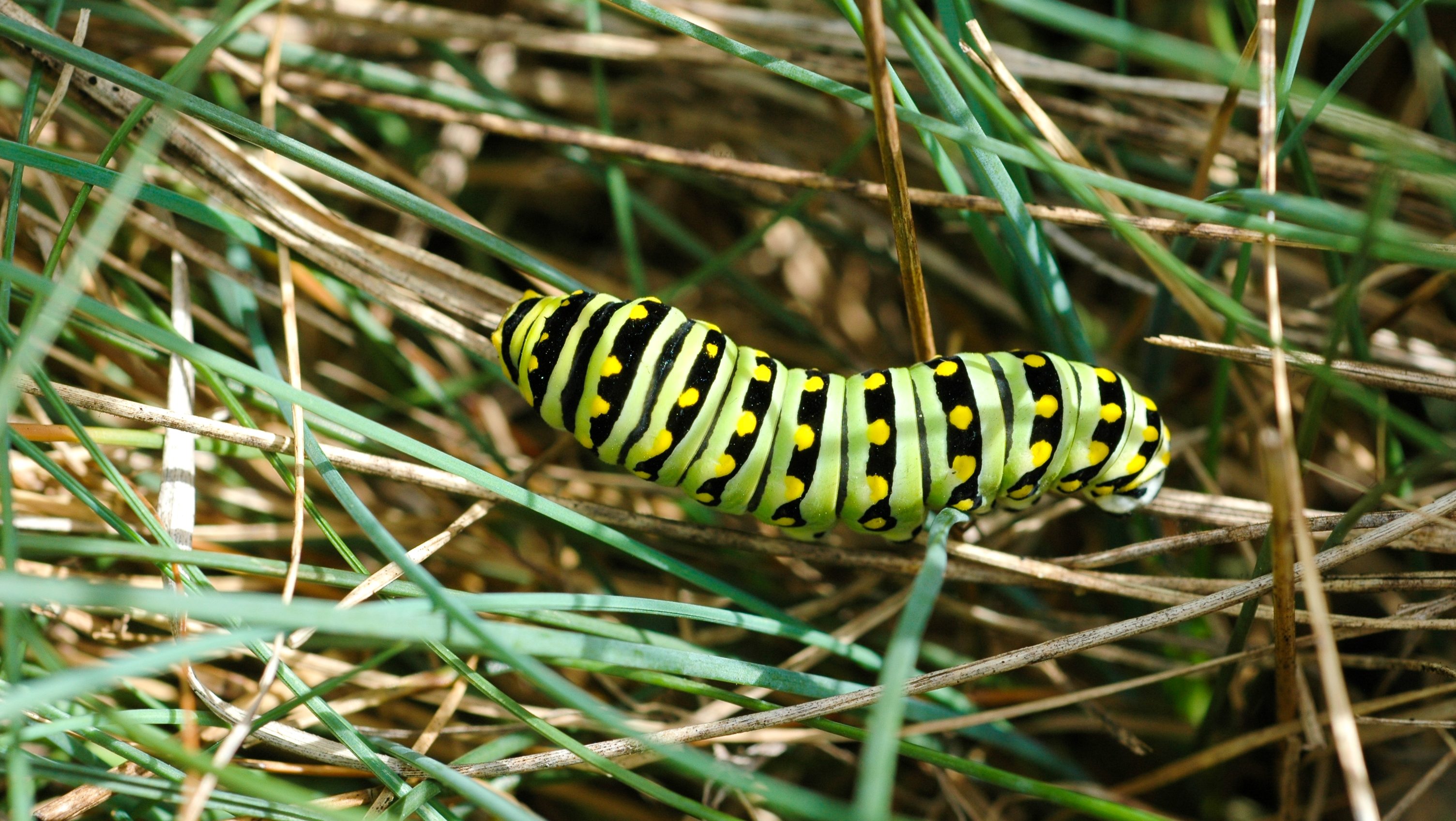
When my wife and I moved into our home 20 years ago, we decided to replace the conventional front yard with native and drought-tolerant plants. When we began ripping up that turf, we got a lot of negative comments from the neighbors. Why would we do that?
Twenty years later, that front yard is well loved by western fence lizards, goldfinches, quail, native bees and many other wild creatures. That was the goal and we expected it.
But you know who else loves it? The neighbors. Kids have always been drawn to the rocks and bushes, perfect places for hiding. Some neighbors use it as a family photo backdrop. When encountering someone on a neighborhood stroll and we describe where we live, we often get “Oh, you’re the ones with the nice yard!”
Similarly, leaving dead vegetation and leaves is not a sign of laziness. Nor is it ugly. An unkempt corner of your yard will add beauty to the neighborhood in the form of butterflies, bees and songbirds.
Taken collectively, North American backyards represent a lot of open space. That space can be a giant monoculture that requires a lot of pesticides, fertilizer, water and boring work to maintain. Or it can be great wildlife habitat, a biologically diverse mini-ecosystem that contributes to larger conservation efforts.
Anyone with a yard can help with that conservation effort right now. Do something else this weekend and save the spring cleaning for later.
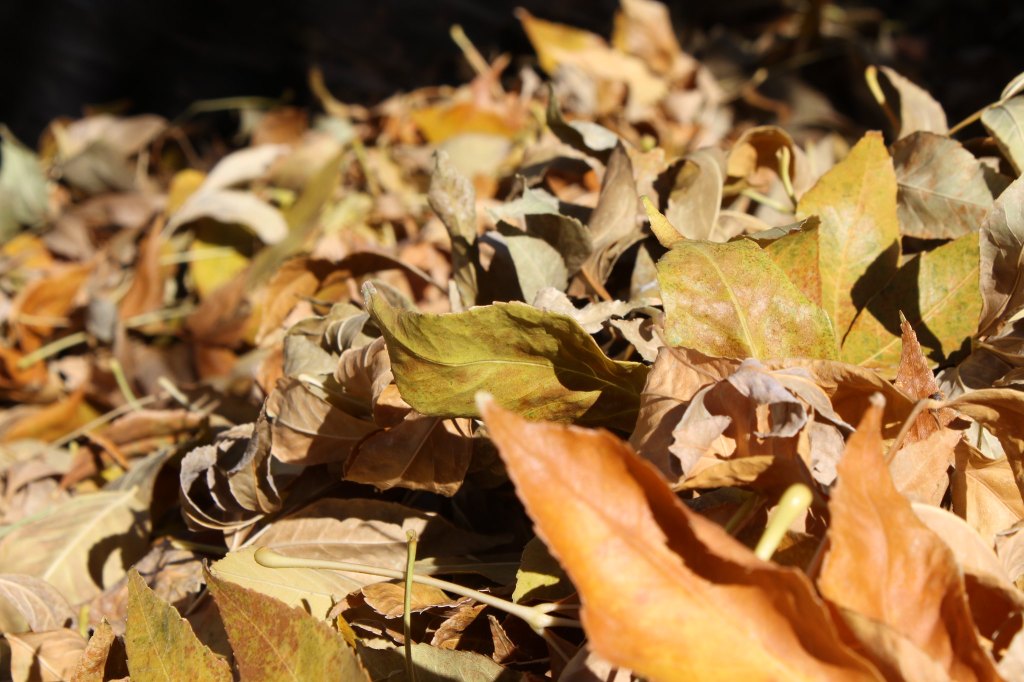



Please, someone give A. Solomon some advice about not using poisons (RoundUp weed killer) in your garden. For such a small area it should not take long to tidy up. Maybe a friend could help you or a young person looking to make a few bucks for an afternoon of work. Do a little research about planting native plants. Call a local garden club to get advice. No RoundUp please!
I live in a one-bedroom apartment in an old building in East of Palm Springs, CA. I have a very small backyard. 6 x 10 approximately. I have the outside AC condenser there, a small concrete slab maybe 4 x 6 and a lot of weeds. My apartment manager wants me to get rid of the weeds. It is a fire hazard she says. I have a bad knee and it is difficult for me to move around, get on my knees and pull weeds from the roots. So, I have left it. I spoke with the Director of a local botanical garden and sent her a picture then I spoke with Cal/IPC and sent them a picture and the conclusion was to use RoundUp weed killer which I have not done yet and having difficulty buying that.
I truly appreciate your article; it feels like you’re approving what I am doing. This is just the third year I have been leaving the garden debris standing over the Winter and then leave it as a mulch in the Spring. I neaten it up a little so everyone can enjoy the flowers as they bloom.
Just today we enjoyed watching a young rabbit chasing around 2 big crows and then another bird got in on the fray (not sure what it was but it had a beautiful show on its wingspan.) Every time a crow tried to set down on the grass the bunny came out of hiding and chased it away. Now realize, this yard is less than a quarter of an acre and it faces a main street with a fair amount of auto and pedestrian traffic but that’s outside our picket fence. Today our visiting wildlife was not concerned with anything but their game or fight, whichever it was. It was wonderful! Thank you.
I have the fortunate pleasure of having a little over half of our 1/2 acre set aside to complete native plant gardens and/or native deciduous and evergreen forest cover. Despite what I tell myself, I tend to add a little more natural area every year, getting rid of more turf lawn in the process. I’ve been a strong proponent of leaving leaves in any natural area dating back to my childhood. In addition to your positive attributes abovementioned, leaving leaves in place works long-term wonders on building healthy layers of detritus matter and topsoil. I’ve had several people marvel at my soil health, especially in my forested areas. Overall, most neighbors are cool with leaves being used as mulch, but there was once a complaint by someone who actually stated that leaves aren’t and shouldn’t be considered and used as mulch. To me ground leaves look great in natural areas and was I very disappointed that there are still so many people so detached from basic ecological understanding.
The only issues I’ve encountered with my HOA have been caused by my native plant gardens in the front yard of our home. I often allow beneficial native plants such as lemon mint, boneset and prairie catchfly, to name a few, to come up in the turf itself, especially between the sidewalk and the street. I mow between them to keep the grass cut but the tall plants still attract unwanted attention from some neighbors. I do my best to educate as many people as possible, but there are still many that prefer what I consider plastic lawns with more non-native plants and grass that look far too unnatural and well-groomed to me. I’m also an extremist when it comes to native plants, all but completely ridding my property of non-native species, excluding my Zoysia grass lawn. Over the years, the more biodiversity that I’ve added, the more native fauna that I’ve attracted. When I first moved in 20 years ago, I never saw dragonflies. I now see them during the warmer months every year like clockwork. Gardening with ecological benefits in mind can be challenging and cumbersome but in the end it’s definitely worth it!
I live in a small rural NE Oregon town with Ordinances that insist on mowing grass when it gets to 8 inches. I am trying to get rid of as much grass as possible but there is definite pressure to practically venerate that monoculture. It may have something to do with the fact that we grow a large percentage of the Kentucky bluegrass in the U.S. in our valley. But I find that I have to weed out smaller noxious weeds that have invaded the entire town before I mow or that problem is just perpetuated year to year. I do not spray, but I am one of a few organic gardeners here. I had to have a hearing a couple years ago when I had too much vegetation to manage and wanted to weed out the offending weeds before I whacked or mowed. I was told there was “no provision for organic gardening/farming in the Ordinances.” How does one handle such ignorance?
A good article – but written in February and circulated in the newsletter on May 3, so far too late and by then largely irrelevant (our highs reached 87 in Salt Lake City this week!). Editor, please note!
I actually did not do my fall cleanup last year, based on the same advice from another source, but was disappointed at the results. Spring-flowering bulbs (snowdrops, aconites, crocuses, chionodoxa, scilla) bloomed but were partly smothered by the debris, and some miniature daffodils did not bloom at all. This fall I shall be far more selective: my flower beds will be cleaned up, and only my wild areas will be left untouched.
Your suggestions about leaving leaves an other organic litter on the ground would have a much larger impact if you could get groundskeepers who care for large properties to follow your advice. I live in the Rogue Valley Manor complex that includes many acres of lawns, trees, shrubs and flower gardens. The staff clean the grounds of fallen leaves every winter. Have you worked with groundskeeper publications or associations?
Great article, Mark, thank you! I especially appreciate you noting that it’s not a case of all or nothing. Here in California, where until this year’s rains our main concerns were drought and wildfire, we have been advised to clear out undergrowth and leaf litter to reduce the risk of catastrophic wildfire. But some folks take that to the extreme, raking up every leaf and pulling every weed, leaving nothing to help retain moisture and nutrients in the soil, provide habitat for insects or offer twigs etc. for nesting. Your article is a great reminder to let things just be longer (especially when fire risk is low in spring).